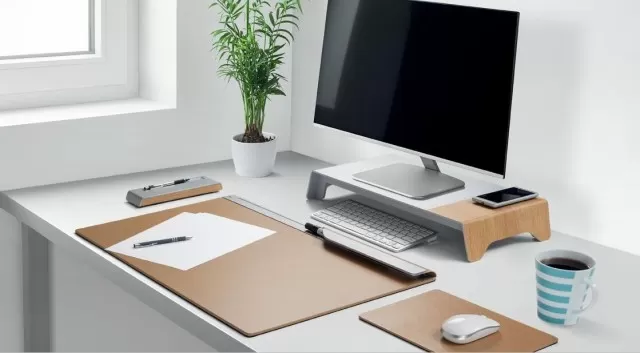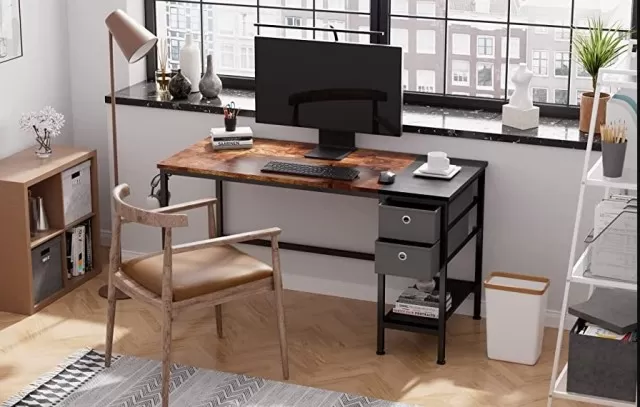Maintaining a germ-free workspace is crucial, follow these office cleaning tips to effectively eliminate germs from your desk and work environment.
Unexpected Bacterial Hotspots

According to a survey conducted by the job-search site Joblist, frequently touched office items like keyboards and desks are often breeding grounds for bacteria, yet these surfaces are seldom cleaned.
The survey revealed that the average respondent cleans their computer mouse and keyboard-less than twice a month, and their desk around three times a month. Additionally, nearly a quarter of the 1,000 respondents admitted to going through an entire workday without washing their hands in a month.
These unhealthy habits create an environment, whether in an office or at home, that is teeming with germs.
Research by Charles Gerba from the University of Arizona shows that the average desk contains approximately 800 bacteria per square inch.
Surprisingly, the unwashed coffee cup and work phone at your desk harbor even more bacteria, with 2,200 and 1,600 bacteria per square inch, respectively. In comparison, the average toilet seat in an office building carries only around 59 bacteria per square inch, a small fraction of the germs present on your desk.
So next time you eat lunch while making calls or typing emails, it’s worth considering.
Coming into contact with these bacteria-infested office surfaces can lead to serious illnesses and infections.
A study on workplace germs found that 96% of the tested keyboards were contaminated with potentially harmful bacteria, including disease-causing microorganisms like E. coli (from fecal matter) and Staphylococcus aureus (MRSA), which is a type of antibiotic-resistant bacteria known to cause infections.
To make matters worse, nearly three-quarters of the Joblist survey respondents admitted to going to the office while being sick, which is particularly concerning in the current COVID-19 pandemic.
Research from the University of Arizona reveals that when a coworker is sick, the risk of infection from certain viruses can be as high as 90%. It’s important to note that this study was conducted before the COVID-19 pandemic.
Furthermore, the researchers found that over half of the workplace surfaces, including doorknobs, office coffee pot handle, phones, and desks, can become contaminated with a virus with just one sick person present in the office. However, simple hygiene measures such as washing hands before eating and regular cleaning with disinfectant wipes can reduce the risk of infection to less than 10%.
To prevent the spread of germs, it is essential to wash your hands thoroughly and frequently, especially after using the restroom and before eating.
While it can be challenging to keep frequently touched desk items such as keyboards, phones, and computer mice completely germ-free, adopting proper cleaning habits can make a significant difference.
First and foremost, to prevent the spread of germs, it is crucial to wash your hands thoroughly and frequently, especially after using the restroom and before eating. Then follow these cleaning practices to regularly disinfect your desk and other office items.
To keep your workspace clean, consider wiping down your most frequently touched office surfaces every evening before you finish work.
Cleaning Your Desk and Office Accessories

Start by cleaning the items on top to disinfect your office desk and the surrounding area.
If you use a coffee cup or reusable water bottle at work, wash it daily with liquid Dish Soap and hot water, or take it home from the office each night and run it through the dishwasher. Use disinfectant wipes to clean frequently used items such as staplers, tape dispensers, scissors, and frequently used pens, ensuring that you wipe down all sides.
You may also consider washing other desktop accessories like pen holders with soap and water.
Next, disinfect the surface of your desk.
Remove all items, including your computer (if possible), phone, pen holder, and other accessories, from the desktop, or move them aside while you clean. Thoroughly wipe down the entire surface with disinfectant wipes.
Allow the cleaning solution to dry before returning the desk items to their original positions.
Cleaning Desks in a Home Office

While utilitarian desks in most office buildings are easily cleaned with disinfectant wipes, your work-from-home desk may be made of a different material.
Be sure to use cleaning products that are safe for the surface to avoid discoloration or damage, and consult the manufacturer’s instructions for specific cleaning guidelines.
For cleaning wooden desks, typically use cleaners designed for wood surfaces or a diluted solution of mild soap and water.
Avoid saturating the surface and immediately wipe away any excess moisture. For other desktop materials such as laminate or engineered wood, use a gentle, non-abrasive cleaner or a soap-and-water solution along with a microfiber cloth to wipe away grime and germs.
Cleaning Your Keyboard, Mouse, and Screen

Before cleaning computer accessories and screens, power down your device and unplug the keyboard and mouse.
Follow these steps to clean your keyboard:
Shake the keyboard upside down gently over a trash can to remove loose crumbs and dust.
Use compressed air between the keys to clear any remaining debris. Clean the keyboard with a disinfectant wipe, paying extra attention to frequently used keys such as the space bar and Enter key.
Squeeze out excess liquid from the wipe before cleaning to avoid dripping moisture into the openings, which could damage the keyboard. Allow the keyboard to dry completely before use.
For cleaning your computer mouse:
Unplug the mouse and remove the batteries if necessary.
Clean all sides and the scroll with a disinfectant wipe. For laptops, swipe the disinfectant wipe across the touchpad, being careful not to introduce excess moisture into the openings.
Allow the mouse to dry completely before use. When cleaning your computer screen, avoid using paper towels, cleaning rags, glass cleaners, and other harsh chemicals that can damage the LCD screen.
Wipe the display with a microfiber cloth dampened with a diluted solution of mild dish soap and warm water.
Rinse the cloth with Clean Water, squeeze out excess moisture, and wipe the screen again to remove any soapy residue.
*The information is for reference only.